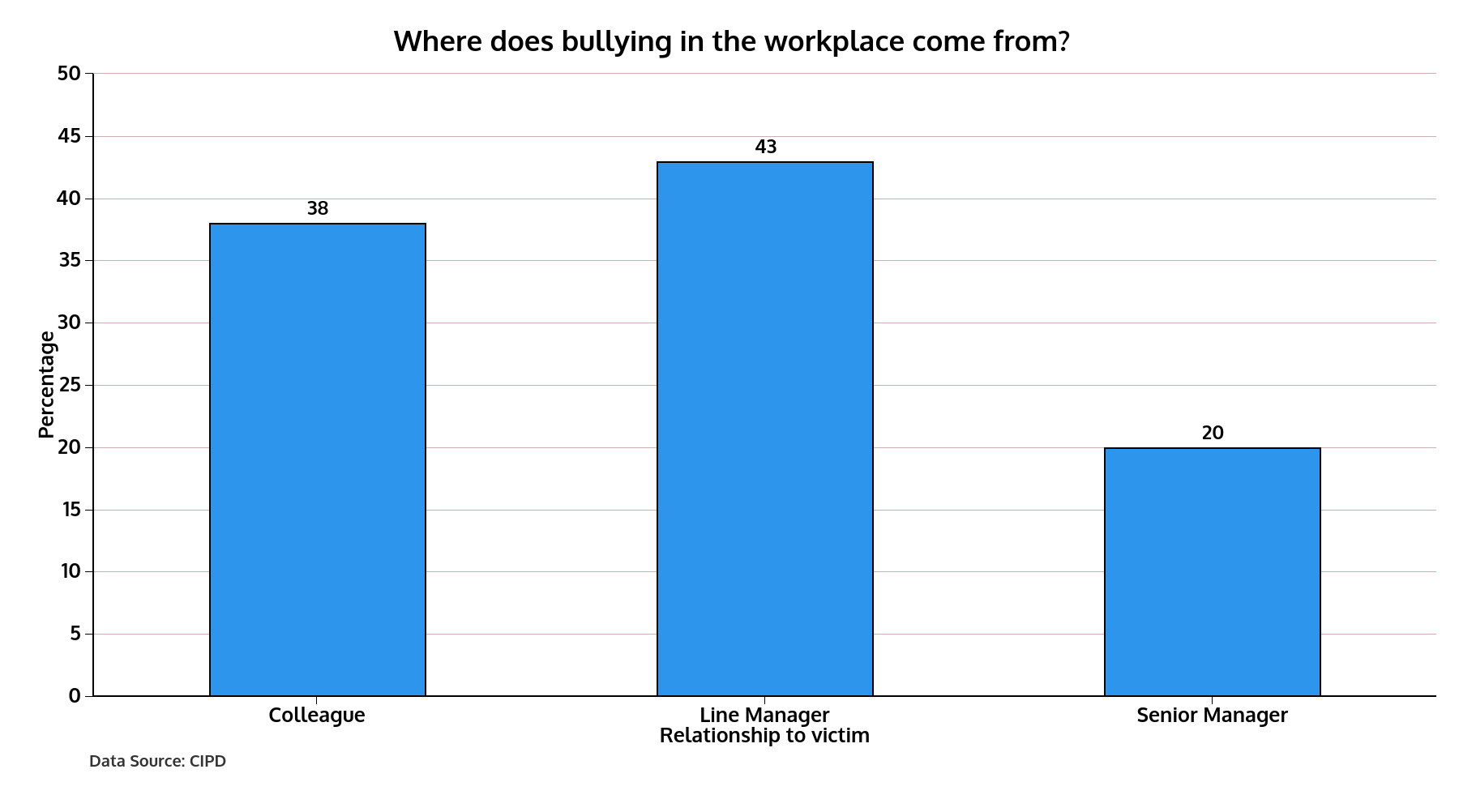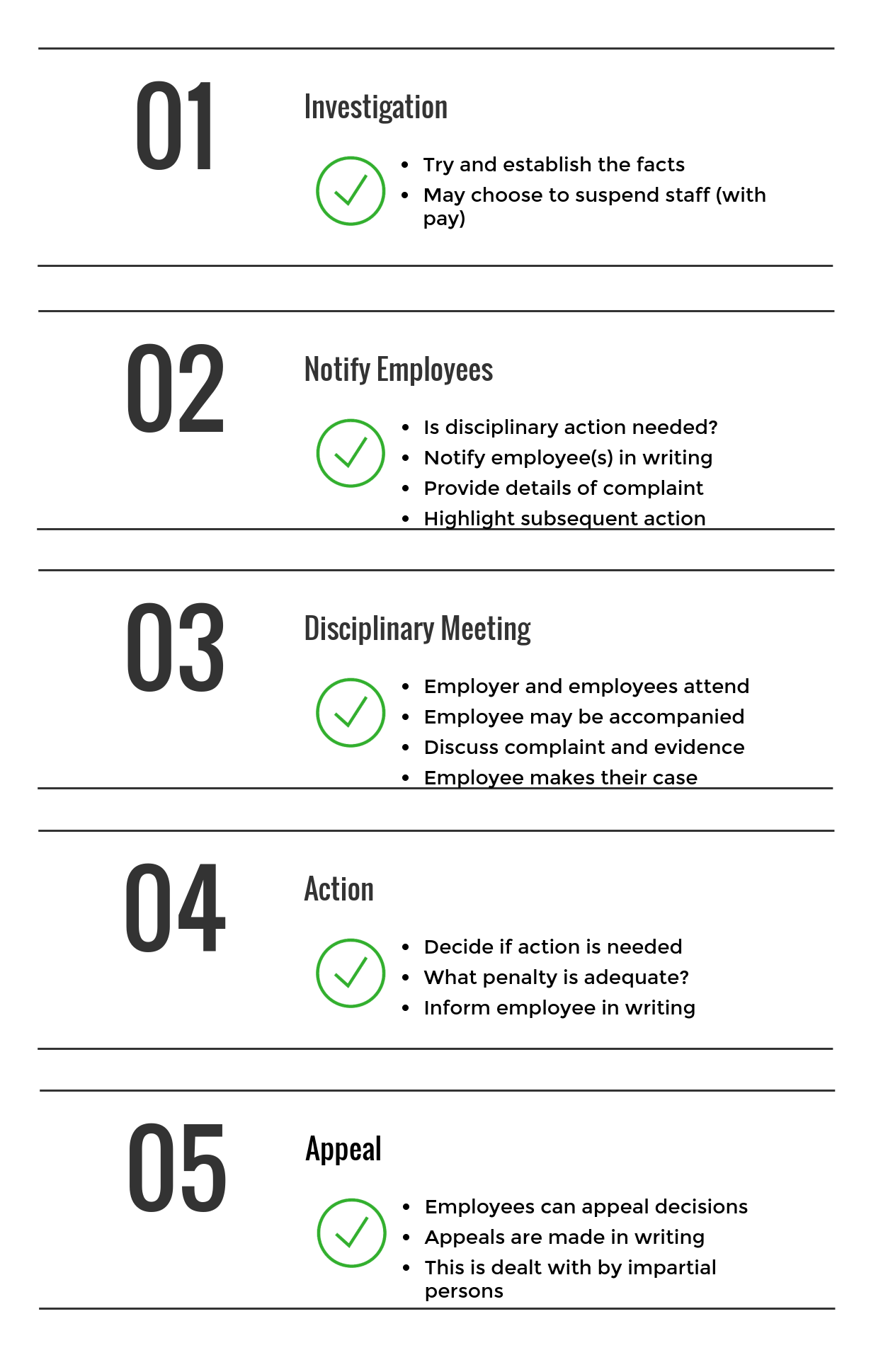Have you ever stopped to think about workplace bullying? While we may like to believe that bullies are solely confined to the back of the school bus, harassment at work is a serious problem that appears to have slipped under the radar of the nation’s employers and HR departments. Does the UK really have workplace bullying problem though? And what can businesses do about it?
What is workplace bullying?
Before we delve into the numbers, let’s first identify exactly what workplace bullying is.
Bullying in the workplace can take many different forms, and as such, isn’t always easy to recognise straight away. While the archetypal bully of after-school television may provoke thoughts of physical abuse (or Nelson Muntz), office torment often involves a more mental type of anguish.
Loosely put, bullying is considered a persistent and intentional series of actions that work to break down the self-esteem of an individual. While this might traditionally happen face-to-face, the increasing accessibility to technology means that modern day communication channels can also be used to domineer colleagues.
Types of workplace bullying include:
- Exclusion
- Unwelcome sexual advances
- Verbal insults
- Rumour spreading
- Purposely preventing career advancement
- Threats in relation to job security
- Humiliation
- Being overly critical
What is the state of bullying in the UK?
If you’re lucky enough to be employed in a friendly and laid-back environment, it might be difficult to comprehend the scale to which workplace bullying is a problem within UK business. As with most things, seeing often constitutes believing, however the problem seems to transcend playground tittle tattle and is a very real issue in the corporate world.
According to a YouGov Poll (for the TUC), 29% of people have been the victims of workplace bullying. That’s nearly 3 in every 10 workers and would equate to 9.1 million of the UK workforce. To put that into perspective, that’s more than the populations of Scotland and Wales combined.
A 2011 survey by UNISON supports these findings, with 60% of their 6,000 respondents reporting either experiencing or witnessing bullying in their job. Additionally, in a report released in November 2015, the Advisory, Conciliation and Arbitrary Service (Acas) revealed that their helpline receives 20,000 phone calls every year in relation to bullying. This figure is said to have stayed fairly consistent since 2010.
So let’s take a moment to fully grasp these figures. 29% of people have been bullied at work, an additional 30% have witnessed bullying at work and there are more than 20,000 helpline phone calls made every year in relation to bullying at work. High, no?
While these figures are in themselves a cause for concern, numerous studies have suggested that workplace bullying is also on the rise.
29% of people have been the victims of workplace bullying. That’s nearly 3 in every 10 workers and would equate to 9.1 million of the UK workforce.
The Fair Treatment at Work survey, showed that in the years between 2005 and 2008, the number of people who had experienced bullying within the previous two years had risen by 3%. Additionally, in the Workplace Employment Relations Study (WERS), a survey of managers found that those who had received bullying complaints had risen from 7% to 11% between 1998 and 2011.
The rise of cyber-bullying
Due to the development of technology, it’s perhaps not surprising to find that bullying has made its way into the digital age. Cyber-bullying is any form of abuse that utilises technology to harass an individual. This means that social media, email and SMS have all become gateways for bullying to enter the era of perpetual communication.
According to UNISON, 80% of workers had experienced some form of cyber-bullying. It also showed that nearly one in five people faces cyber-abuse at least once a week.
Cyber-bullying offers one distinct problem over the more traditional methods of abuse; the irrelevance of time and space. The always ‘on’ and always contactable nature of mobile technology means that victims can often find little respite from the barrage of abuse – even outside of work hours. Furthermore, social networks, whilst also offering a great recruitment outlet for employers, can present a public platform for bullying, meaning that sufferers have no control over those who could become witness to the abuse they’d rather keep private.
The costs of bullying
Acas claims that bullying at work costs the UK economy £18 billion a year. This figure combines sickness-related absences (as a result of bullying), staff turnover and the reduction of productivity. Of course, there’s much more to bullying than just the financial implications, with operational and human costs also being high.
While it’s the pound signs that might make the biggest impression on employers, workplace bullying can have a broader impact on how a business operates. The increase in sickness absence, for instance, can leave a department short-staffed and unable to meet demands. This can, in turn, increase the workloads of other employees who are having to pick up the slack. This could lead to lower company morale, higher stress levels and a drop in productivity.

For employers though, it can be easy to forget who the real victims are and it’s those that are at the tail end of harassment that feel it the most. The gradually rising pressure can have long-term health and career implications, eventually seeping into their personal life and relationships at home. More than a third of people who report bullying leave their job, which while not just increasing staff turnover for the employer, obviously has a life altering impact on the employee.
Who are the victims of workplace bullying?
Anyone can suffer from bullying at work. While we might like to think that no discernable characteristic would garner unwanted attention, sex, race and office status can all become targets for bullying.
Gender:
Sexism and sex-related harassment is perhaps one of the largest areas of the spectrum and women are thought to be 11% more likely than men to suffer from workplace bullying – according to YouGov. Opportunity Now, a gender diversity campaign, conducted their own study and recorded that 52% of women had been subjected to some form of bullying at work in the previous three years.
Disability:
Disability and illness are more likely to result in physical violence than any other characteristic. Research from Cardiff and Plymouth universities showed that 10% of disabled respondents had been the victims of physical abuse at work, 5.5% more than those without a disability. The aforementioned Opportunity Now survey also showed that 71% of disabled women had been subjected to some form of workplace abuse.
Religion / belief:
Legislation regarding religious discrimination has been in place in the UK since 2003, however beliefs are now covered by the Equality Act 2010. There were 1,000 religious discrimination cases taken to an employment tribunal at the turn of the decade, with the number of people being abused because they were merely assumed to be of a certain religion being high.
Ethnicity:
A survey by the CIPD, in association with MORI and Kingston Business School, reported that ethnicity plays a major role in bullying at work. Black and Asian workers are the most likely to be targeted by bullies, with 29% of the latter being the victims of harassment. Conversely, 18% of white people claimed to experience abuse. Similarly, only 55% of ethnic minority employees feel like a valued team member at work.
Sexual orientation:
Another YouGov survey found that nearly one in five people who identified themselves as gay, lesbian or bi-sexual had experienced verbal bullying at work (this included bullying from customers). Perhaps more worryingly, however, is that a quarter of these workers aren’t transparent about their sexuality with colleagues. Even more, 35%, choose not to divulge this information with managers.
What causes workplace bullying?
Workplace bullying and the economy
There has long been a link between the strength of the economy and the level of workplace bullying. The uncertainty that’s created by a recession can become a catalyst for office harassment, as financial pressures slowly seep their way through office cubicles.
When the employment market takes a downturn (as a result of the recession), job security suddenly gets put under the spotlight. This can result in a competitive environment where people feel the need to assert dominance over other colleagues, in an almost ‘survival of the fittest’ type arena. While this might appear somewhat primitive, intentional bullying is also in itself, a primitive a response, so it’s perhaps not too surprising to find that pressure can create this negative reaction.
Workplace bullying and hierarchy
But what about workplace hierarchy? Well it appears that line managers are the most likely to be the instigators of workplace harassment.

In responding to a CIPD study, 43% of workplace bullying victims reported that harassment stemmed from a line manager, with 38% saying that it came from colleagues. One in five had suffered bullying from a senior manager or chief executive. With great power, comes great responsibility, but it can also lessen accountability. Those at the top may feel that they’re simply too indispensible to be reprimanded, or their position on the office food-chain means that people may not report abuse.
Workplace bullying and the environment
The problem of workplace bullying is often born from the culture that employers create. A competitive environment made up of ambitious staff can easily lead to hostility, as employees start to step over others to ‘survive’ or ‘progress’. In fact, the mixture of personalities can be a problem in itself, which is where it pays to have a solid recruitment strategy.
A company’s attitude to discipline can also have a bearing on how quickly bullying can spread through the workplace. Being too lenient, when behaviours warrant actions otherwise, may lead to employees taking advantage. Conversely, being unreasonably strict can result in a backlash. An employer and / or HR department need to therefore ensure that negative behaviours are met with negative consequences, without lacking understanding or empathy.
The law
For all intents and purposes, bullying does not exist in UK law, however the term is generally used interchangeably with that of harassment. Harassment is covered by the Equality Act of 2010 and is defined as: ‘unwanted conduct related to a relevant protected characteristic, which has the purpose or effect of violating an individual’s dignity or creating an intimidating, hostile, degrading, humiliating or offensive environment for that individual.’
The key phrase to take out of this is perhaps ‘relevant protected characteristic,’ which covers aspects such as age, gender, religion, disability, sexual orientation etc. Interestingly, however, a person doesn’t need to possess any of these characteristics in order to make a complaint. Witnessing harassment or receiving harassment based on the perception of someone having a characteristic (rightly or wrongly) is enough for someone to voice a problem.
Harassment relates to the following:
- Age
- Sex
- Disability
- Gender
- Marriage
- Pregnancy
- Race
- Religion or belief
- Sexual orientation
Acts of bullying that don’t meet the necessary criteria to be classed as harassment, aren’t able to be put forward to an employment tribunal.
Employers typically have a ‘duty of care’ to all of their employees and any resignation as a result of bullying can result in a claim for constructive dismissal. An employer is ultimately accountable for the actions of staff and if someone leaves the company due to harassment, then this can be construed as a breach of contract. This breach could also include the failure to protect the health, safety and welfare of staff.
Addressing workplace bullying
91% of workers believe that bullying in the workplace isn’t dealt with appropriately, so what can employers and HR teams be doing to ensure that staff feel adequately protected?
Well it should go without saying that even the smallest of organisations should have a clear policy for bullying and harassment. This will not only help management in addressing any complaints, but will also make employees feel that their wellbeing is a priority.
The policy should explicitly state that bullying won’t be tolerated by the company. These behaviours should then be listed clearly and accompanied by the steps that will be taken once a complaint is received. It’s also important to assure staff that any complaint will be dealt with in a respectful and confidential manner.
Informal approaches to workplace bullying
Some matters of workplace bullying don’t require formal procedure and can often be rectified with just a casual chat. Not every case of office abuse is intentional, so a relaxed and informal conversation can be enough to see and end of unwanted behaviours. Additionally, the actions of some people may be being influenced by issues outside of the office, and a brief meeting can aid employers in better understanding the problem.
91% of workers believe that bullying in the workplace isn’t dealt with appropriately
In some instances, it may make sense to enlist the help of a mediator. Mediation is a voluntary process that uses an unbiased third party to liaise between the complainant and the perpetrator. Structured but informal meetings are usually arranged between both the two, with all discussion remaining confidential. It’s hoped that this will lead to an amicable agreement, that why no means legally binding, is enough to restore a working relationship. This method of communication is usually implemented when the dispute is particularly sensitive.
Although a commonly used method to address bullying, it is argued that mediation isn’t always the most appropriate. Mediation works under the assumption that both parties are equal and both parties are looking to rebuild a damaged relationship. This is often not the case in a bullying dispute and the victim is typically at a disadvantage.
Power (and the perception of power) plays a big role in mediated conversation, something that doesn’t bode well when nearly two-thirds of bullying cases involve a manager or other senior figure. Mediation therefore works best when the harassment isn’t seen as intentionally malicious and is instead seen as a misunderstanding or a difference of opinion.
Formal Procedure
When informal methods fail, disciplinary action usually follows. Formal procedure takes the shape of an investigation where a penalty may be incurred if deemed necessary. The key to a formal procedure is fairness, both to the complainant and the accused. You may experience cases where a false allegation is made and this should also be met with firm investigation.
The formal process may differ slightly depending on your company, however it should loosely adhere to the following:

The aim of implementing a formal HR procedure is to ensure that the issue is fairly and swiftly dealt with. Although these cases typically take the shape of ‘accuser vs the accused’ it’s important that the process is impartial and transparent.
So, does the UK have a workplace bullying problem?
While it’s difficult to accurately quantify it, workplace bullying appears to be having a larger impact on the UK labour force than some of us might have realised. Bullying at work is costing the economy £18 billion a year and more than a quarter of workers have been subjected to bullying at one time or another. This latter figure is especially staggering when you try to apply it to your own office. It’s important, therefore, that employers, HR professionals and the other powers that be, have strategies in place to ensure that the wellbeing of staff is protected.
It’ll be nigh on impossible to completely eradicate workplace bullying, but awareness coupled with well thought out strategies, can help reduce the commonality of the problem and the impact that it has on businesses.



